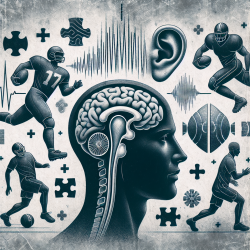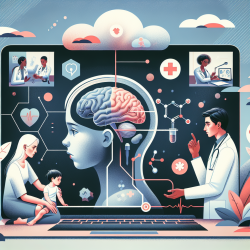Introduction
In the ever-evolving field of education, data-driven decisions are crucial for creating effective learning environments. As practitioners dedicated to improving children's educational outcomes, understanding the underlying mechanisms of learning is essential. Recent research titled Assessing the functions underlying learning using by-trial and by-participant models: Evidence from two visual perceptual learning paradigms by Cochrane and Green (2021) offers valuable insights into the functional forms of learning that can be leveraged to enhance educational practices.
Understanding Perceptual Learning
Perceptual learning involves improvements in the ability to make perceptual decisions about various stimuli. The study by Cochrane and Green focuses on the mathematical functions that best capture learning, emphasizing the importance of understanding these functions to infer the underlying mechanisms of learning. The research highlights the dominance of exponential functions over power functions in modeling individual learning curves, providing a foundation for data-driven educational strategies.
Implications for Practitioners
For practitioners in speech-language pathology and online therapy services, the findings of this research have significant implications:
- Adopting Exponential Learning Models: The study supports the use of exponential learning models to better understand individual learning trajectories. By focusing on these models, practitioners can tailor interventions to align with the natural learning processes of children.
- Personalized Learning Plans: Understanding the exponential nature of learning allows for the development of personalized learning plans that cater to the unique needs of each child, optimizing their learning potential.
- Data-Driven Interventions: Implementing data-driven interventions based on the exponential learning model can lead to more effective outcomes, ensuring that each child's progress is tracked and adapted in real-time.
Encouraging Further Research
While the study provides a robust foundation, it also opens avenues for further research. Practitioners are encouraged to explore the following areas:
- Longitudinal Studies: Conducting long-term studies to observe the impact of exponential learning models on various educational outcomes.
- Cross-Disciplinary Applications: Exploring how these models can be applied across different educational disciplines and age groups.
- Technology Integration: Investigating how technology can be leveraged to facilitate data collection and analysis in real-time, enhancing the implementation of exponential learning models.
Conclusion
By embracing data-driven insights and exponential learning models, practitioners can significantly improve educational outcomes for children. This approach not only aligns with the natural learning processes but also empowers educators to create personalized and effective learning environments. As we continue to explore the potential of these models, the future of education looks promising, with the promise of better, more tailored educational experiences for every child.
To read the original research paper, please follow this link: Assessing the functions underlying learning using by-trial and by-participant models: Evidence from two visual perceptual learning paradigms.










